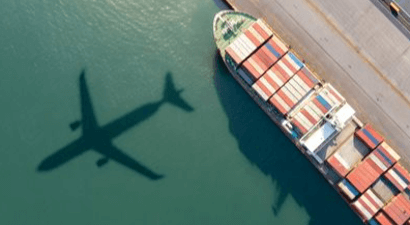Protective Writs in South Africa Revisited: Application of the ‘Monica S’ Principle in South Africa
In July 2017 we published a note on a judgment handed down in the Western Cape Division of the High Court of South Africa, which addressed the common practice in South Africa of issuing so-called ‘protective writs’.
THE ‘TEBTALE’ DECISION
The respondents in that matter sought to secure its claims against beleaguered Hanjin Shipping Co Ltd (“Hanjin”) for payments due arising out of the charter of its vessels by Hanjin. On 2 September 2016, following Hanjin having entered rehabilitation proceedings in South Korea, the respondents caused to be issued a series of protective writs citing seventy-two of Hanjin’s vessels as defendants throughout the various coastal divisions of the High Court of South Africa. The applicant, Tebtale Marine Inc (“Tebtale”) with full knowledge of the existence of the writs, subsequently acquired the thirty first defendant, the MV “Hanjin Cape Lambert”, which it renamed the MV “Mount Meru”. Tebtale then sought an order, seeking, inter alia, the setting aside of the protective writs in respect of the MV “Mount Meru”.
At the core of the decision was the question whether the issue of such a protective writ would entitle a claimant to arrest an associated vessel notwithstanding a change in ownership. Support for this position is contained in the English law decision handed down by Brandon J (as he then was) in The Monica S [1967] Lloyd’s Rep. 113 (QB Adm). Succinctly stated, The Monica S is authority for the argument that if a res was sold after the accrual of a charge, the security obtained would attach irrevocably to the res despite any subsequent change(s) of ownership. The respondents in relying on The Monica S to maintain their writs, pointed out that the position in English law remained unchallenged and was indeed followed and applied by the courts in other jurisdictions, including Australia, Singapore and Hong Kong.
The court, constituted before a single judge, in considering this “difficult question” reframed the issue in light of the relevant provisions of the Admiralty Jurisdiction and Regulation Act, No 105 of 1983 (“the Admiralty Act”) as follows: whether, in respect of the statutory lien contained in the provisions of the Admiralty Act, the person who would be liable in personam must be the owner of the property to be arrested at the time of the issue of the process (the respondents’ contention) or at the time of arrest (the applicant’s position), where the vessel to be arrested is an associated ship as provided for in the relevant associated ship provisions.
The court “with some hesitation” found in the applicant’s favour, holding that the relevant time of ownership is the time of the arrest. In reaching this decision, the court noted that it was “brought to this view principally by the wording of the [Admiralty] Act”. The court further noted that it was not persuaded by The Monica S, as it was a decision which was primarily based on the interpretation of a particular English statute. The court accordingly ordered the deletion of the MV “Mount Meru” from the protective writs.
Whilst the respondents were given leave to appeal on 24 August 2017 they decided not to prosecute the appeal further.
THE ‘SEASPAN GROUSE’ DECISION
As indicated above, the respondents had issued protective writs out of the various jurisdictions of the High Court of South Africa. On 23 August 2017, and having obtained an amendment of the protective writs, the applicants caused the arrest of the MV “Seaspan Grouse” in the port of Durban. As noted in the judgment, it was common cause that the MV “Seaspan Grouse” had been sold to the first and second applicants by way of an ‘arm’s length sale’ and that the transfer of ownership had taken place after the issue of the respondents’ protective writs.
Security having been established to secure the release of the vessel, the applicants in this matter sought to have the deemed arrest set aside on the same legal basis as the challenge mounted in the Tebtale decision, namely whether the relevant time for determining the requisite control or ownership of a vessel, as an associated ship and liable to be arrested as such, is at the time of the issue of the protective writs (the respondents’ position), or both at the time of the issue of the protective writs and at the time of the arrest of the ship (the applicants’ position).
At the hearing of the matter to determine this question much emphasis was placed on the meaning to be ascribed to the relevant provisions contained in the Admiralty Act. In seeking a ‘generous interpretation’ of the provisions of the Admiralty Act, the respondents’ counsel pointed out that maritime claimants are perforce required to become ‘wandering litigants of the world’ in order to enforce their claims against mobile and transitory maritime defendants. A generous interpretation of the Admiralty Act was accordingly consistent with its purpose of assisting maritime claimants in the enforcement of their claims.
In its judgment handed down on 26 February 2018, the court agreed that the relevant provisions of the Admiralty Act required a generous interpretation.
In dismissing the application to set aside the deemed arrest, the court further agreed with the position advanced by the respondents that an action can only be commenced once, particularly with the legislature having elected to use the word ‘commence’ in the relevant provision as opposed to ‘institute’ (a term which is used in other provisions of the Admiralty Act). Such an interpretation was further held to be in conformity with the Supreme Court of Appeal’s holding in The Jute Express 1992 (3) SA 9 AD that the arrest (itself) is merely a mechanism to give utility and effectiveness to the judgment that a plaintiff seeks in the court.
In so doing, the court disagreed with the opinions expressed by Wallis JA in his doctoral thesis The Associated Ship and South African Admiralty Jurisdiction (which stance was subsequently also adopted by Hofmeyer in the second edition of his publication on Admiralty Jurisdiction). A particular aspect considered by the court was the argument put forward by Wallis JA (and contended for by the applicants) that the constitutional interpretation of the provisions of the Admiralty Act is based on the property law provisions contained in section 25(1) of the Constitution of the Republic of South Africa. Wallis’ view is that it is unconstitutional and an arbitrary deprivation of property if an innocent person who has no contractual relationship with the plaintiff and is unaware of the protective writ issued should have its ship arrested for a former owner’s debt.
In this regard the court concluded that whilst the practice of issuing protective writs may appear to amount to an arbitrary deprivation of property, “it is apparent that it is an accepted practice in most, if not all, major maritime countries ... [and] is an accepted fact in keeping with the accepted purpose of the Admiralty Act, namely to assist maritime claimants in realizing their c[l]aims.”
It is noteworthy that the judgment also makes specific reference to the fact that it has been recognized for a long time as “a fact of the maritime industry” that a ship may be arrested (whether or not a sister ship or an associated ship) for the alleged debts of a former ship owner, and that this fact has given rise to a practice in ship sales contracts whereby specific clauses are inserted in recognition that a claim can survive a change in ownership. Indemnity insurance or so-called ‘lien insurance’ are also available to provide cover for such an eventuality (the applicants in fact had such insurance in place in respect of the ‘Seaspan Grouse’ at the time of its arrest).
Furthermore, and in considering the conclusions reached in the judgment handed down by Burger AJ in the Tebtale decision, the court found that the judge had noted certain reservations as to which way he should rule on the issue but that, despite these doubts, the judge had appeared swayed by the view adopted by Wallis JA in his book. The court accordingly disagreed with the conclusions contained in the Tebtale decision.
It remains to be seen whether the unsuccessful applicants will seek leave to appeal against the decision handed down by Justice Gyanda in the ‘Seaspan Grouse’. For now, South African legal practitioners are faced with two conflicting judgments handed down out of two divisions of the High Court. That said, it is submitted that the recent judgment delivered in Durban in relation to the “Seaspan Grouse” contains a more rigorous analysis of the relevant provisions of our Admiralty Act which is alive to the legislature’s policy in formulating the wording thereof, as well as the peculiarities of maritime practice which require claimants to become ‘wandering litigants of the world’ in order to secure and enforce their claims.





